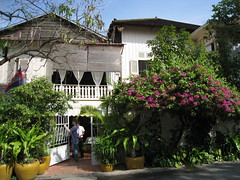
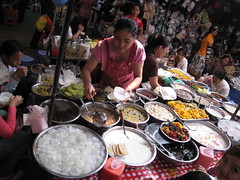
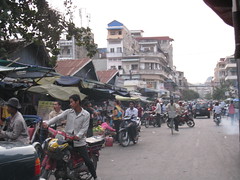
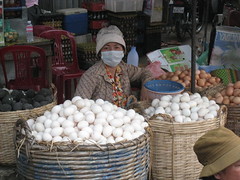
After four days, we finally tore ourselves away from lush Kep and made our way back to Phnom Penh. We found the city to be quite charming - bustling but not too chaotic, tourist savvy but not too in-your-face, and offering great food. Our hotel, the Boddhi Tree, was a converted colonial mansion and super pleasant. We had about a day and a half here, having stayed longer in Kep, and could have easily stayed longer.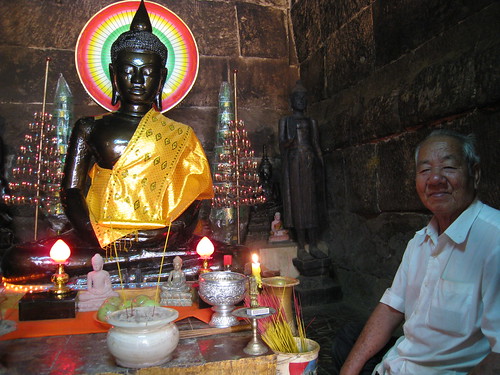
We had an wonderful and unexected experience at Wat Ounalom, which is the traditional home of the head of Cambodian Buddhism. It was here that the Patriarch of Buddhism at the time was taken away and murdered by the Khmer Rouge. We were looking around the grounds when an old man gestured for us to follow him, and he led us into the central stupa of the temple. He said it was as old as Angkor Wat, and the stones had a similar character. The man blessed us with some holy water and then we all three fell into meditation for a few minutes - the energy in the stupa was quite intense!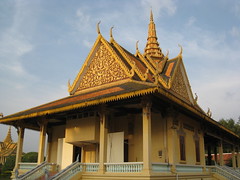
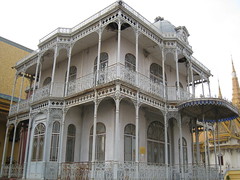
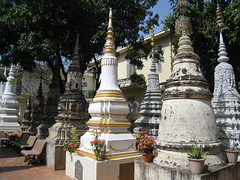
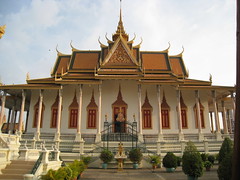
The majority of the sights in the city are concentrated around the river, with the royal palace, Silver Pagoda, and the main tourist area situated there. We spent an afternoon touring the palace/Pagoda complex, which is quite large and full of examples of those swoopy Cambodia rooftops. One of the more unusual buildings is the Napolean III Pavilion that Napolean had built for Empress Eugenie near the Suez Canal. She then proceeded (after a fight?) to ship it to Phnom Penh as a gift to the king.


At night, with a bit of detective work, we tracked down Tiny Toones Combodia, which is a breakdancing school for at risk kids. Kay Kay, the founder of the school, is such a great guy with a huge passion for helping kids. He is a former gang member and breakdancer in Long Beach, CA, who got into some trouble and was deported to Cambodia. Through his programs he has reached over 3,000 kids, and now has a few touring dance troupes that perform all over the world. Kay Kay welcomed us into his studio and his home, and then took us out for a night on the town at a local club where his kids were performing. We were all treated like royalty at the club, with waiters constantly refilling our cokes, and Kay Kay being presented with an enormous bottle of Johnny Walker Red. Cindy and I had a great time watching the local Cambodians strike a pose, and are determined to help Kay Kay with his non-profit in some concrete way (we've got a few ideas).
The next day, we dove into the horrific history of the Khmer Rouge, going to see the nearby S-21 prison and taking a journey out to the Killing Fields. Not going to try to rehash what happened back then, but suffice to say that the experience was extremely sad and sobering (Cindy brought an excellent book on this period called "Stay Alive, My Son", by Pin Yathay, that we both read. I'd recommend that for a first-hand account of the tragedy). Estimates range from 1.5 million to 3 million people that were killed by Pol Pot's murderous regime. One thing we learned was that many more people died from the ineptitude of the regime to provide adequate food or medical aid to the people than from executions. However, it is still thought that at least 500,000 people were killed directly by the Khmer Rouge.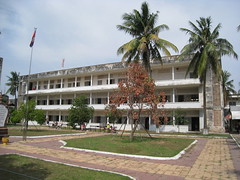
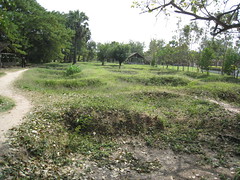
S-21 was the prison inside of Phnom Penh where enemies of the state were tortured and frequently forced to write fake confessions implicating family members in crimes so they could also be arrested. Nearly all of the residents of this prison were eventually sent to the Killing Fields outside of Phnom Penh for execution. The Killing Fields was particularly disturbing, with its contrast of a peaceful, natural surrounding and the presence of numerous mass graves. The sole monument is stark and powerful: a glass tower full of skulls of the victims. Many of the senior Khmer Rouge leaders have never been brought to justice (though there are some trials going on in Cambodia now), leaving a sense of lack of resolution to this genocidal period.
Friday, January 16, 2009
Phnom Penh
Subscribe to:
Post Comments (Atom)
0 comments:
Post a Comment